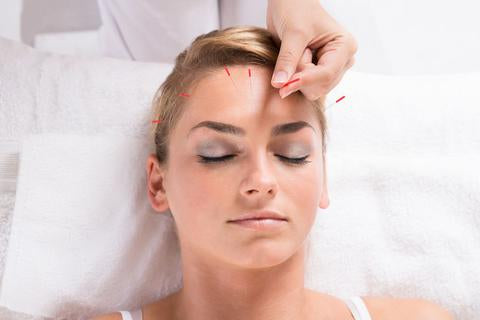People often question the legitimacy of how acupuncture needles are made and whether the quality and cleanliness match to today’s hygienic standards. In uncovering the pseudoscience of acupuncture, we will look at more technical aspects which involve an introduction to raw materials, sharpening as well as quality control. For standard regulation, each acupuncture needle will need to bypass up to 8 important steps to ensure that they are completely safe before being used on our clients, these 8 steps go as follows:
- Raw materials
- Semi-finished products
- Twining the needles handles
- Semi-finished products acupuncture needles
- Finished product acupuncture needles
- Packing
- Disinfection
Step 1) Raw Materials
Like other tools, quality acupuncture needles do not come cheap, especially when taking into account the different types of materials, lengths as well as diameters. depending on the type of needle being produced, different raw materials will be more expensive than others. The raw materials must be of quality so that when the needles are made they are safe for the acupuncturist to use on their client. Generally acupuncture needles are commonly made by stainless steel. Some materials are better than others, though is not obvious unless one deep dives into the specifics of each individual material.
Most of the raw materials used are stainless steels. Lierre.ca distributes acupuncture needles which are manufactured in a strictly quality controlled process. All raw materials used in making the needles are from Japan where quality materials are guaranteed and required for certification in order to pass all regulations.
Step 2) Sharpening and Moulding
It is important that the sharpness of the needles be identical in measurement. The machinery used to create needles used for acupuncture are costly and is considered to be highly skilled work. Therefore brands with small budgets cannot afford this method and will often turn to getting their needles manually sharpened. Consequently, these needles are harder to render identical. This is why Lierre only works with machine based companies. By doing so it decreases the rate at which acupuncture needles are rendered defective. It is also safer to use machine made needles as it reduces the risk of pain and inflammation that clients would otherwise experience with cheaper needles. For these reasons this process is necessary.
Generally acupuncture needles can be sharpened into: 0.12, 0.14, 0.16, 0.18, 0.20,0.22, 0.25, 0.30, 0.35, 0.40mm (the sizes depend on where the needle is being used on the body).
Sharpening device made in diamond as illustration. Each of them have different diameters. Stainless steel diameter with 0.6 mm goes through hole in the center with pressure and gets thinner and stronger, becoming a wire-like shape that can be used to produce needles.
Step 3) Semi-Finished Products
After the needles have been cut and shaped, the needles need to be put through a machine. The purpose of this step is to enhance its weight so that the needle will easily penetrate the skin without causing pain to the patient. To explain further, in this stage, semi-finished wire will be cut into different lengths.
Step 4) Twining the Needle Handles
In this step, the manufacturer will twine the handles by using an industrial machine meant to ensure that the needles have superior grip. This is it will be safe and easy for the acupuncturist to hold when applying the acupuncture needles on their client.
Step 5) Semi-Finished Products
a. After the sharpening, moulding, and handling processes have been completed, the manufacturer will conduct a chemical cleaning. This is the 1st stage of the cleaning process where all the raw material residuals, pollutant or oils will be removed by the use of chemicals. These elements may cause a chemical reaction which may lead to the defectiveness of a batch of needles.
b. After the 1st phase of cleaning is completed, the semi-finished products will enter into the 2nd phase of cleaning. Purified water will be used in this step to avoid any mineral residue that might impact the needle’s quality.
Step 6) Finished Product: Acupuncture Needles
a. Heat dry
After both cleaning stages are done, the next step is to ensure that the instruments are dry. In this stage the manufacturer will use a special container suitable for transportation purposes. The cleaning process prior to this sixth step can take up to 12 hours.
b. Examination
Since producing acupuncture needles require the utmost accuracy and zero tolerance of defect, each needle must be examined one by one under a microscope at 300X in order to spot any problems with its sharpness, uniformity, and whether or not it passed the industry standard. This job is performed by highly trained professionals and all of the defective items will be removed from the batch to ensure that they don’t make it to shelves.
Step 7) Packing
At this point, the process is nearly finished! Now is when the needles are packed. All of the materials that have been packaged and sent to Lierre.ca are made in a controlled lab that is a 100% dust-free working environment with strict dressing protocol.
Step 8) Disinfecting
In the last stage of the procedure, the manufacturer will bulk package all the processed acupuncture needles and send them for full package sterilization, the reason for this is because the regular cleaning process will only clean the materials itself. However the cleaning won’t fully eliminate the residual bacteria itself which could be from machinery, the material or even the air. This makes the sterilization process a crucial and final step.
After the sterilisation has been completed the manufacturer will vacuum package the product to ensure that all bacteria, contaminants or other chemicals are eliminated. Then the final product will then be transported for merchandising.
For more info about our acupuncture needles, feel free to check our web site at https://lierre.ca/ to find out more, we offer Canada #1 acupuncture needles with the huge selection with the best quality/price in town.

